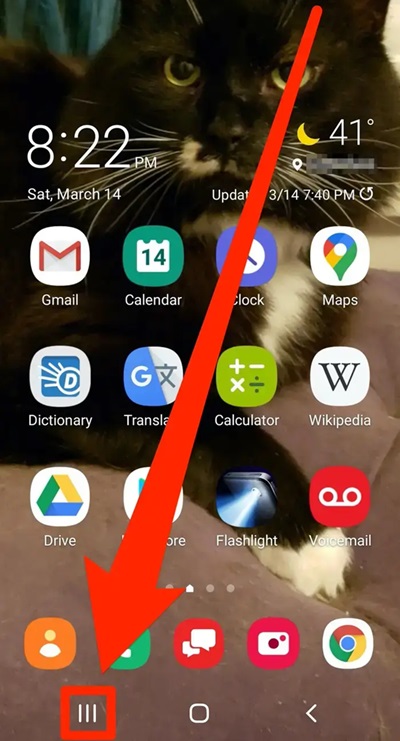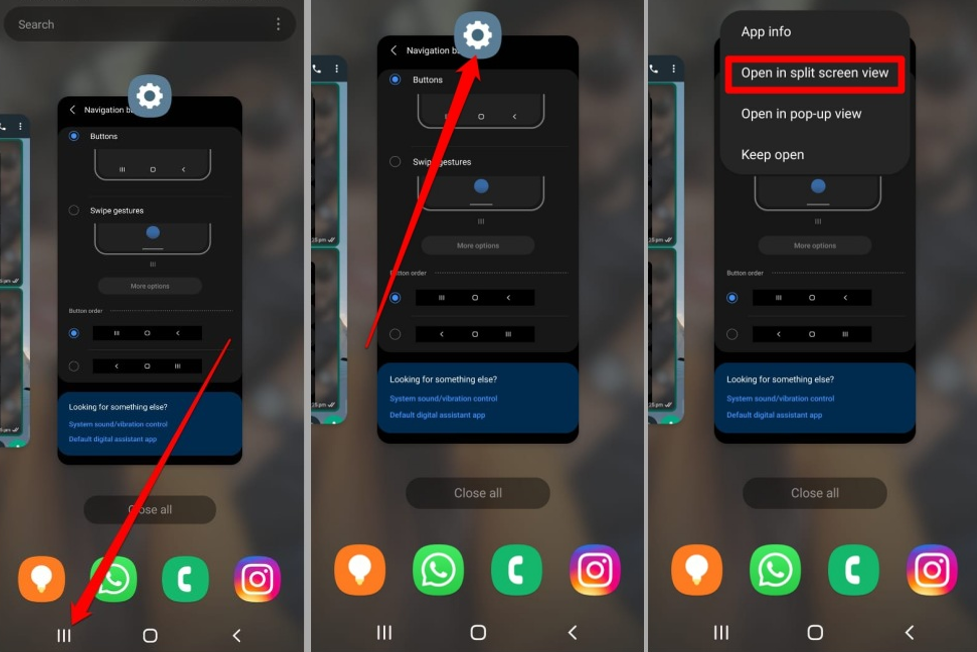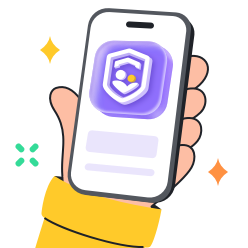Most people are not aware of all the features available on their Android phones; multitasking with a split screen is among them. This feature allows users to run two apps simultaneously on the same screen. It makes things easier as you don’t have to switch between apps constantly. You can watch videos while browsing the web or take notes during a call.
The split screen feature can boost your productivity and convenience overall. The only requirement, however, is that to use the split screen, your Android device has to be version 7.0 or newer. The following details will further build on how you can best use these multitasking features to enhance your productivity.
Why split screen on Android?
The split screen divides your screen into two parts. As mentioned earlier, it allows you to run and interact with two apps simultaneously. It is like having a mini command center at your fingertips.
The following are the benefits of split screen on Android:
- Multitasking and efficiency: Split screen makes organizing your tasks easier. For example, you can compare data, copy and paste content, or simply take notes during data entry. It allows you to view reference material while working on your main task.
- Focus: Split screen minimizes distractions by reducing the need to switch between apps. That way, you spend less time searching for opening apps and can focus more on your work.
- Education: Students can take tremendous advantage of this feature as they can follow along with their online lectures/meetings on one hand while taking notes in another app or checking their calendars/chats.
- Travel: You can have your maps app open to navigate while simultaneously checking your travel recommendations in another app.
- Entertainment: Watch a Netflix series while keeping up with your social media because why not?! With a split screen, the possibilities are endless.
Multitasking can turn a single device into a versatile tool. It can streamline your workflow. Moreover, it reduces the time you spend on tasks, therefore enhancing your overall mobile experience.
Apps that support a split-screen mode
Android split-screen mode is compatible with a wide range of applications. It turns your device into a powerhouse of productivity & entertainment. Following are the apps that work seamlessly with split screen:
- YouTube: You can watch your favorite videos or follow tutorials while browsing the web or taking notes.
- Netflix: How about enjoying a show while catching up with emails or scrolling through social media? Sounds delightful and entertaining!
- Google Docs: You can edit documents on one side of the screen while referring to research material on the other.
- Google Chrome: This is arguably one of the most useful apps to have on the split screen. Browsing the web while using any other app makes it the best option for multitasking.
- WhatsApp: You can chat with friends, family, or colleagues while checking your calendar, managing tasks, or even shopping online.
- Telegram: This is yet another chat-up that serves the same function as WhatsApp, which is also supported by the split-screen mode.
- Line: Line is another calls & messaging app that supports the split screen running. You can enjoy voice and video calls while simultaneously having another app open by the side.
- Microsoft Teams: Microsoft Teams is a video conferencing, meeting app mostly used for holding professional meetings. It is a useful app to have running on the split screen while taking notes.
- Outlook: Microsoft Outlook is a free email and calendar app & having it supported on the split screen increases the overall productivity.
Despite the plethora of supported apps, some apps are still not fully compatible with the split-screen mode. These include apps like Instagram and Snapchat. Those apps are designed for a full-screen experience, so they do not support the split screen. Also, apps like mobile games are not compatible with the split screen.
A simple guide to Android split screen, seamless start multitasks.
What are the disadvantages of using a split screen?
Even though the split screen feature offers many benefits, it has its drawbacks. Therefore, it is also important to understand the limitations of this feature as well. The following are the disadvantages of splitting screen:
- Clutter: By dividing your screen between two apps, both apps can appear smaller. It does not make it ideal for tasks that require a larger display. For example, watching a video or editing a document.
- Performance issues: Running two apps at the same time can often slow down your device. You can expect a significant impact if your phone is not a high-end one. This can lead to slower performance, app crashes, and the device overheating.
- Battery drain: Multitasking can sometimes lead to increased battery usage. Since both apps are running at the same time, you can expect more consumption of power, and that comes at a cost.
- App compatibility: It is imperative to note that not all apps are compatible with the split screen mode. As mentioned earlier, well-known apps like Instagram, Snapchat, and many video games are not supported by it.
- User interface: In some phones, the UI might not be optimized for the split screen mode. It leads to a below-average performance in some apps. Text or buttons may appear small on smaller screens, therefore it can be difficult to interact with them.
Even with these disadvantages, the split screen feature remains a valuable tool in many scenarios. But being aware of its limitations can help you make the most of it.
How to split screen on Android phones?
For the most part, you don’t have to rely on any third-party app to access the split screen. Instead, you can use native features like basic gestures and the “Recent apps” menu. Here are more details on each method.
Method 1: From the ‘Recent Apps’ menu
Step 1. Open the Recents screen: Tap the square button or swipe up from the bottom of your screen and hold to open the Recent Apps menu.



Step 2. Select the first app: Scroll through the list and select the app you want to use in the split-screen mode.
Step 3. Choose the split-screen option: Select the split screen option from the dropdown menu or by tapping and holding onto an app window.
Step 4. Select the second app: Select another app from the Recents screen, or close the Recents screen and run another app. It will appear on the other half of the screen.
Users can exit split-screen mode by dragging the window divider to the edge of the screen, i.e., up or down, left or right. Similarly, they can exit out of all the recent apps, and they won’t be stuck in this multitasking mode.
Method 2: With gestures
On some Android phones, split screen can be enabled through gestures.
You have to:
- Open the first app that you wish to use in the split screen mode.
- Swipe up from the home bar.
- Choose the split screen option from the app control menu.
- Open the second app you wish to use in this mode.
- Adjust the divider between both apps accordingly.
It is that simple! By using either of these methods, you can enjoy the benefits of multitasking on your device.
How do I get split screen on Samsung?
Some Samsung devices have unique features and slightly different methods for enabling the split screen mode. For Samsung phones, you have to:
- Launch the app
- Tap the “Recent Apps” button or swipe up & hold.
- Tap the app Icon at the top of the preview
- Select “Open in Split Screen View.”
- Choose the second app.



Samsung devices also offer additional features like resizing app windows & dragging and dropping. Using split screens on Samsung devices is a blissful experience because they are highly optimized to run it.
How to fix the split screen not working?
Sometimes, users may encounter issues with the split screen feature. Here are some common problems and their solutions:
- Compatibility: You have to make sure that both apps you are trying to use support the split-screen mode, as some apps are not designed for this feature.
- Software update: Make sure that your device is running the latest version of Android. Updates can fix bugs and improve the user experience.
- Restart device: Sometimes, a simple restart can resolve any issue regarding the split screen feature.
- Settings: Check that the split screen is enabled on your device from the device’s settings.
- Performance: If your device is older and has limited processing power, running the multi-window mode can be difficult. You can close other background apps to remedy this issue.
- Cache: Clearing the cache of the apps can sometimes resolve performance issues as well.
If you continue to experience problems, you can search online for a solution or contact the device manufacturer’s official support through their website. For the most part, a quick restart is all that you’ll need to fix this issue. However, if that doesn’t work, there are countless online support channels, and you can also refer to the manufacturer’s customer support team for help.
Final takeaways
The Android split screen feature is an excellent tool for multitasking. By running apps simultaneously, you can make efficient use of your time and resources. Screen splitting can be done easily in both portrait and landscape mode on Android, thus making the work more convenient. Simply put, whether you’re comparing changes in two documents or having two files open at the same time, this feature will be all that you need to speed through the work.
Similarly, for parents, introducing apps like FlashGet Kids can ensure that their children are using their devices productively and responsibly. This app provides parental controls and monitoring features to keep a child focused on schoolwork and educational apps. Moreover, It can help create a balanced and secure online environment for your kids. So, test it out if you’re concerned about your child’s mobile usage.

